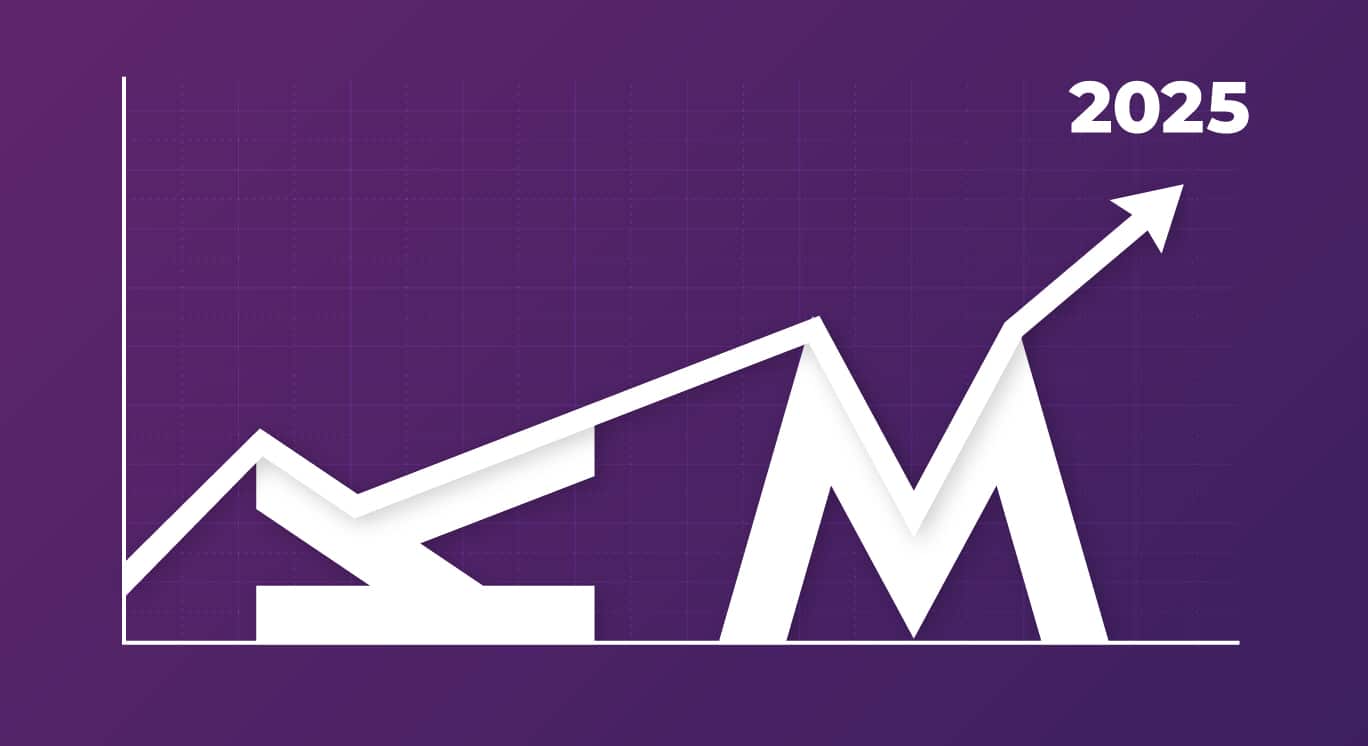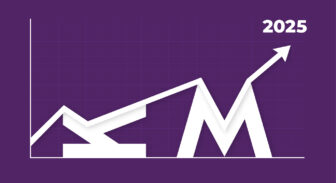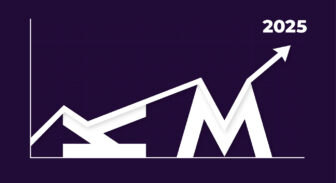The field of Knowledge Management continues to experience a period of rapid evolution, and with it, growing opportunity to redefine value and reorient decision-makers and stakeholders toward the business value the field offers. With the nature of work continuing to evolve in a post-Covid world, the “AI Revolution” dominating conversations and instances of Generative AI seemingly everywhere, and the field of Knowledge, Information, Data, and Content Management continuing to connect in new ways, Knowledge Management continues to evolve.
As in years past, my annual report on Top Knowledge Management Trends for 2025 is based on an array of factors and inputs. As the largest global KM consultancy, EK is in a unique position to identify where KM is and where it is heading. Along with my colleagues, I interview clients and map their priorities, concerns, and roadmaps. We also sample the broad array of requests and inquiries we receive from potential clients and analyze various requests for proposal and information (RFPs and RFIs). In addition, we attend conferences not just for KM, both more broadly across industries and related fields to understand where the “buzz” is. I then supplement these and other inputs with interviews from leaders in the field and inputs from EK’s Expert Advisory Board (EAB). From that, I identify what I see as the top trends in KM.
You can review each of these annual blogs for 2024, 2023, 2022, 2021, 2020, and 2019 to get a sense of how the world of KM has rapidly progressed and to test my own track record. Now, here’s the list of the Top Knowledge Management trends for 2025.
1) AI-KM Symbiosis – Everyone is talking about AI and we’re seeing massive budgets allocated to make it a reality for organizations, rather than simply something that demonstrates well but generates too many errors to be trusted. Meanwhile, many KM practitioners have been asking what their role in the world of AI will be. In last year’s KM Trends blog I established the simple idea that AI can be used to automate and simplify otherwise difficult and time-consuming aspects of KM programs, and equally, KM design and governance practices can play a major role in making AI “work” within organizations. I doubled down on this idea during my keynote at last year’s Knowledge Summit Dublin, where I presented the two sides of the coin, KM for AI, and AI for KM, and more recently detailed this in a blog while introducing the term Knowledge Intelligence (KI).
In total, this can be considered as the mutually beneficial relationship between Artificial Intelligence and Knowledge Management, which all KM professionals should be seizing upon to help organizations understand and maximize their value, and for which the broader community is quickly becoming aware. Core KM practices and design frameworks address many of the reliability, completeness, and accuracy issues organizations are reporting with AI – for instance, taxonomy and ontology to enable context and categorization for AI, tacit knowledge capture and expert identification to deliver rich knowledge assets for AI to leverage, and governance to ensure the answers are correct and current.
AI, on the other hand, delivers inference, assembly, delivery, and machine learning to speed up and automate otherwise time intensive human-based tasks that were rife with inconsistencies. AI can help to deliver the right knowledge to the right people at the moment of need through automation and inference, it can automate tasks like tagging, and even improve tacit knowledge capture, which I cover below in greater detail as a unique trend.
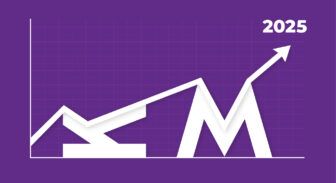 2) AI-Ready Content – Zeroing in on one of the greatest gaps in high-performing AI systems, a key role for KM professionals this year will be to establish and guide the processes and organizational structures necessary to ensure content ingested by an organization’s AI systems is connectable and understandable, accurate, up-to-date, reliable, and eminently trusted. There are several layers to this, in all of which Knowledge Management professionals should play a central role. First is the accuracy and alignment of the content itself. Whether we’re talking structured or unstructured, one of the greatest challenges organizations face is the maintenance of their content. This has been a problem long before AI, but it is now compounded by the fact that an AI system can connect with a great deal of content and repackage it in a way that potentially looks new and more official than the source content. What happens when an AI system is answering questions based on an old directive, outdated regulation, or even completely wrong content? What does it do if it finds multiple conflicting pieces of information? This is where “hallucinations” start appearing, with people quickly losing trust in AI solutions.
2) AI-Ready Content – Zeroing in on one of the greatest gaps in high-performing AI systems, a key role for KM professionals this year will be to establish and guide the processes and organizational structures necessary to ensure content ingested by an organization’s AI systems is connectable and understandable, accurate, up-to-date, reliable, and eminently trusted. There are several layers to this, in all of which Knowledge Management professionals should play a central role. First is the accuracy and alignment of the content itself. Whether we’re talking structured or unstructured, one of the greatest challenges organizations face is the maintenance of their content. This has been a problem long before AI, but it is now compounded by the fact that an AI system can connect with a great deal of content and repackage it in a way that potentially looks new and more official than the source content. What happens when an AI system is answering questions based on an old directive, outdated regulation, or even completely wrong content? What does it do if it finds multiple conflicting pieces of information? This is where “hallucinations” start appearing, with people quickly losing trust in AI solutions.
In addition to the issues of quality and reliability, there are also content issues related to structure and state. AI solutions perform better when content in all forms has been tagged consistently with metadata and certain systems and use cases benefit from consistent structure and state of content as well. For organizations that have previously invested in their information and data practices, leveraging taxonomies, ontologies, and other information definition and categorization solutions, trusted AI solutions will be a closer reality. For the many others, this must be an area of focus.
Notably, we’ve even seen a growing number of data management experts making a call for greater Knowledge Management practices and principles in their own discipline. The world is waking up to the value of KM. In 2025, there will be a growing priority on this age-old problem of getting an organization’s content, and content governance, in order so that those materials surfaced through AI will be consistently trusted and actionable.
 3) Filling Knowledge Gaps – All systems, AI-driven or otherwise, are only as smart as the knowledge they can ingest. As systems leverage AI more and transcend individual silos to operate for the entire enterprise, there’s a great opportunity to better understand what people are asking for. This goes beyond analytics, though that is a part of it, but rather focuses on an understanding of what was asked that couldn’t be answered. Once enterprise-level knowledge assets are united, these AI and Semantic Layer solutions have the ability to identify knowledge gaps.
3) Filling Knowledge Gaps – All systems, AI-driven or otherwise, are only as smart as the knowledge they can ingest. As systems leverage AI more and transcend individual silos to operate for the entire enterprise, there’s a great opportunity to better understand what people are asking for. This goes beyond analytics, though that is a part of it, but rather focuses on an understanding of what was asked that couldn’t be answered. Once enterprise-level knowledge assets are united, these AI and Semantic Layer solutions have the ability to identify knowledge gaps.
This creates a massive opportunity for Knowledge Management professionals. A key role of KM professionals has always been to proactively fill these knowledge gaps, but in so many organizations, simply knowing what you don’t know is a massive feat in itself. As systems converge and connect, however, organizations will suddenly have an ability to spot their knowledge gaps as well as their potential “single points of failure,” where only a handful of experts possess critical knowledge within the organization. This new map of knowledge flows and gaps can be a tool for KM professionals to prioritize filling the most critical gaps and track their progress for the organization. This in turn can create an important new ability for KM professionals to demonstrate their value and impact for organizations, showing how previously unanswerable questions are now addressed and how past single points of failure no longer exist.
To paint the picture of how this works, imagine a united organization that could receive regular, automated reports on the topics for which people were seeking answers but the system was unable to provide. The organization could then prioritize capturing tacit knowledge, fostering new communities of practice, generating new documentation, and building new training around those topics. For instance, if a manufacturing company had a notable spike in user queries about a particular piece of equipment, the system would be able to notify the KM professionals, allowing them to assess why this was occurring and begin creating or curating knowledge to better address those queries. The most intelligent systems would be able to go beyond content and even recognize when an organization’s experts on a particular topic were dwindling to the point that a future knowledge gap might exist, alerting the organization to enhance knowledge capture, hiring, or training.
4) AI-Assisted Tacit Knowledge Capture – Since the late 1990’s, I’ve seen people in the KM field seek to automate the process of tacit knowledge capture. Despite many demos and good ideas over the decades, I’ve never found a technical solution that approximates a human-driven knowledge capture approach. I believe that will change in the coming years, but for now the trend isn’t automated knowledge capture, it is AI-assisted knowledge capture. There’s a role for both KM professionals and AI solutions to play in this approach. The human’s responsibilities are to identify high value moments of knowledge capture, understand who holds that knowledge and what specifically we want to be able to answer (and for whom), and then facilitate the conversations and connect to have that knowledge transferred to others.
That’s not new, but it is now scalable and easier to digitize when AI and automation are brought into the processes. The role of the AI solution is to record and transcribe the capture and transfer of knowledge, automatically ingesting the new assets into digital form, and then leveraging it as part of the new AI body of knowledge to serve up to others at the point of need. By again considering the partnership between Knowledge Management professionals and the new AI tools that exist, practices and concepts that were once highly limited to human interactions can be multiplied and scaled to the enterprise, allowing the KM professional to do more that leverages their expertise, and automating the drudgery and low-impact tasks.
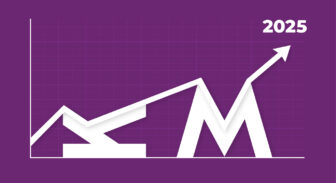 5) Enterprise Semantic Layers – Last year in this KM Trends blog, I introduced the concept of the Semantic Layer. I identified it as the next step for organizations seeking enterprise knowledge capabilities beyond the maturity of knowledge graphs, as a foundational framework that can make AI a reality for your organization. Over the last year we saw that term enter firmly into the conversation and begin to move into production for many large organizations. That trend is already continuing and growing in 2025. In 2025, organizations will move from prototyping and piloting semantic layers to putting them into production. The most mature organizations will leverage their semantic layers for multiple different front-end solutions, including AI-assisted search, intelligent chatbots, recommendation engines, and more.
5) Enterprise Semantic Layers – Last year in this KM Trends blog, I introduced the concept of the Semantic Layer. I identified it as the next step for organizations seeking enterprise knowledge capabilities beyond the maturity of knowledge graphs, as a foundational framework that can make AI a reality for your organization. Over the last year we saw that term enter firmly into the conversation and begin to move into production for many large organizations. That trend is already continuing and growing in 2025. In 2025, organizations will move from prototyping and piloting semantic layers to putting them into production. The most mature organizations will leverage their semantic layers for multiple different front-end solutions, including AI-assisted search, intelligent chatbots, recommendation engines, and more.
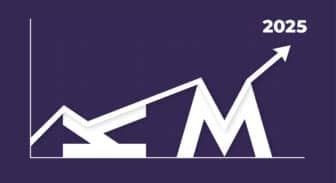 6) Access and Entitlements – So what happens when, through a combination of semantic layers, enterprise AI, and improved knowledge management practices an organization actually achieves what they’ve been seeking and connects knowledge assets of all different types, spread across the enterprise in different systems, and representing different eras of the organization? The potential is phenomenal, but there is also a major risk. Many organizations struggle mightily with the appropriate access and entitlements to their knowledge assets. Legacy file drives and older systems possess dark content and data that should be secured but isn’t. This largely goes unnoticed when those materials are “hidden” by poor findability and confused information architectures. All of a sudden, as those issues melt away thanks to AI and semantic layers, knowledge assets that should be secured will be exposed. Though not specifically a knowledge management problem, the work of knowledge managers and others within organizations to break down silos, connect content in context, and improve enterprise findability and discoverability will surface this security and access issue. It will need to be addressed proactively lest organizations find themselves exposing materials they shouldn’t.
6) Access and Entitlements – So what happens when, through a combination of semantic layers, enterprise AI, and improved knowledge management practices an organization actually achieves what they’ve been seeking and connects knowledge assets of all different types, spread across the enterprise in different systems, and representing different eras of the organization? The potential is phenomenal, but there is also a major risk. Many organizations struggle mightily with the appropriate access and entitlements to their knowledge assets. Legacy file drives and older systems possess dark content and data that should be secured but isn’t. This largely goes unnoticed when those materials are “hidden” by poor findability and confused information architectures. All of a sudden, as those issues melt away thanks to AI and semantic layers, knowledge assets that should be secured will be exposed. Though not specifically a knowledge management problem, the work of knowledge managers and others within organizations to break down silos, connect content in context, and improve enterprise findability and discoverability will surface this security and access issue. It will need to be addressed proactively lest organizations find themselves exposing materials they shouldn’t.
I anticipate this will be a hard lesson learned for many organizations in 2025. As they succeed in the initial phases of production AI and semantic layer efforts, there will be unfortunate exposures. Rather than delivering the right knowledge to the right people, the wrong knowledge will be delivered to the wrong people. The potential risk and impact for this is profound. It will require KM professionals to help identify this risk, not solve it independently, but partner with others in an organization to recognize it and plan to avoid it.
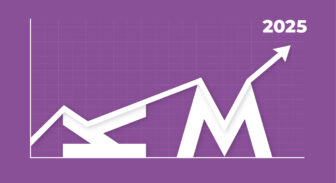 7) More Specific Use Cases (and Harder ROI) – In 2024, we heard a lot of organizations saying “we want AI,” “we need a semantic layer,” or “we want to automate our information processes.” As these solutions become more real and organizations become more educated about the “how” and “why,” we’ll see growing maturity around these requests. Rather than broad statements about technology and associated frameworks, we’ll see more organizations formulating cohesive use cases and speaking more in terms of outcomes and value. This will help to move these initiatives from interesting nice-to-have experiments to recession-proof, business critical solutions. The knowledge management professionals’ responsibility is to guide these conversations. Zero your organization in on the “why?” and ensure you can connect the solution and framework to the specific business problems they will solve, and then to the measurable value they will deliver for the organization.
7) More Specific Use Cases (and Harder ROI) – In 2024, we heard a lot of organizations saying “we want AI,” “we need a semantic layer,” or “we want to automate our information processes.” As these solutions become more real and organizations become more educated about the “how” and “why,” we’ll see growing maturity around these requests. Rather than broad statements about technology and associated frameworks, we’ll see more organizations formulating cohesive use cases and speaking more in terms of outcomes and value. This will help to move these initiatives from interesting nice-to-have experiments to recession-proof, business critical solutions. The knowledge management professionals’ responsibility is to guide these conversations. Zero your organization in on the “why?” and ensure you can connect the solution and framework to the specific business problems they will solve, and then to the measurable value they will deliver for the organization.
Knowledge Management professionals are poised to play a major role in these new KM Trends. Many of them, as you read above, pull on long-standing KM responsibilities and skills, ranging from tacit knowledge capture, to taxonomy and ontology design, as well as governance and organizational design. The most successful KM’ers in 2025 will be those that merge these traditional skillsets with a deeper understanding of semantics and their associated technologies, continuing to connect the fields of Knowledge, Content, Information, and Data Management as the connectors and silo busters for organizations.
Where does your organization currently stand with each of these trends? Are you in a position to ensure you’re at the center of these solutions for your organization, leading the way and ensuring knowledge assets are connected and delivered with high-value and high-reliability context? Contact us to learn more and get started.

